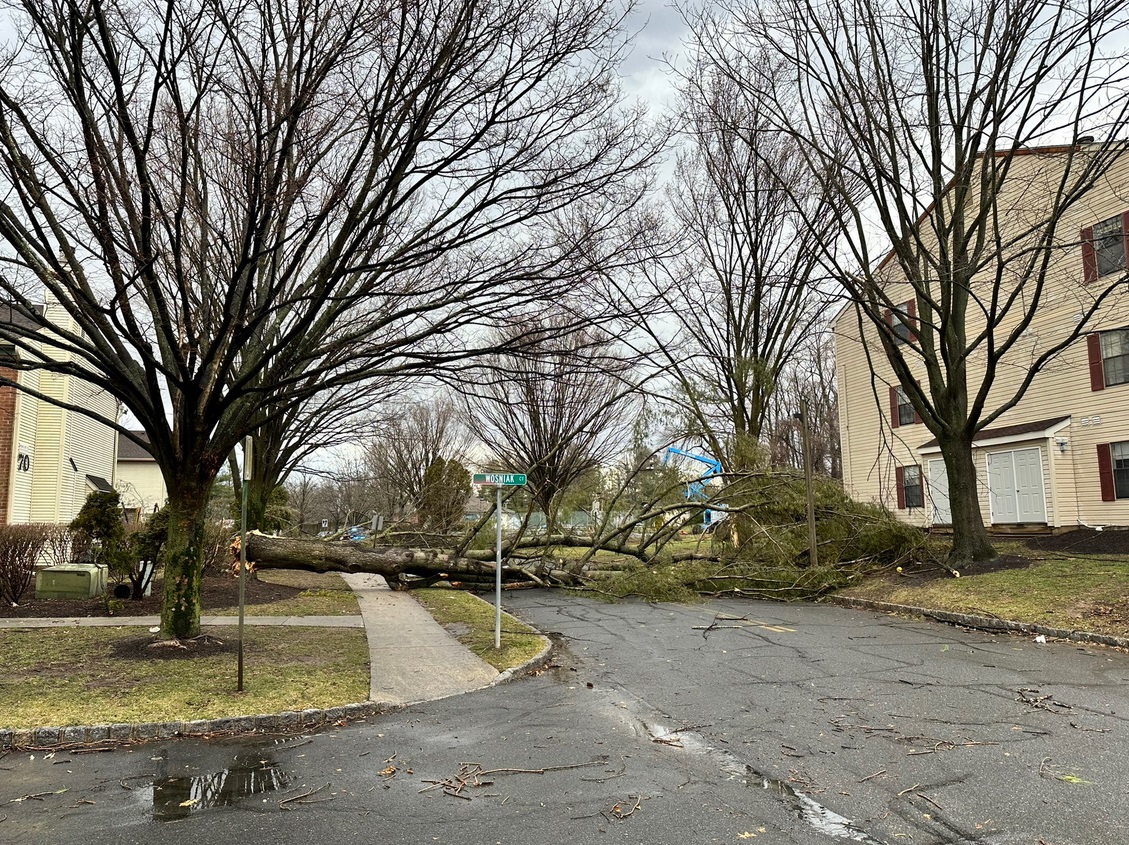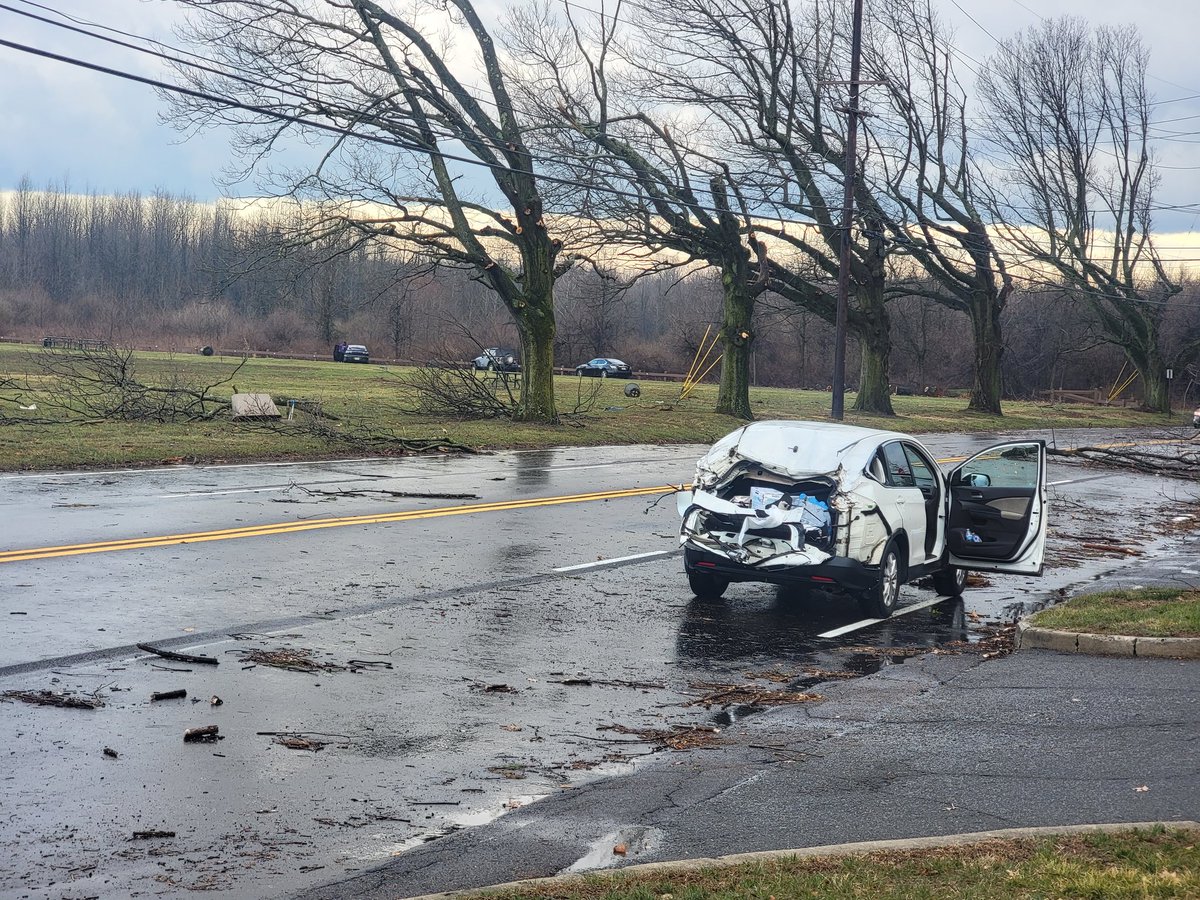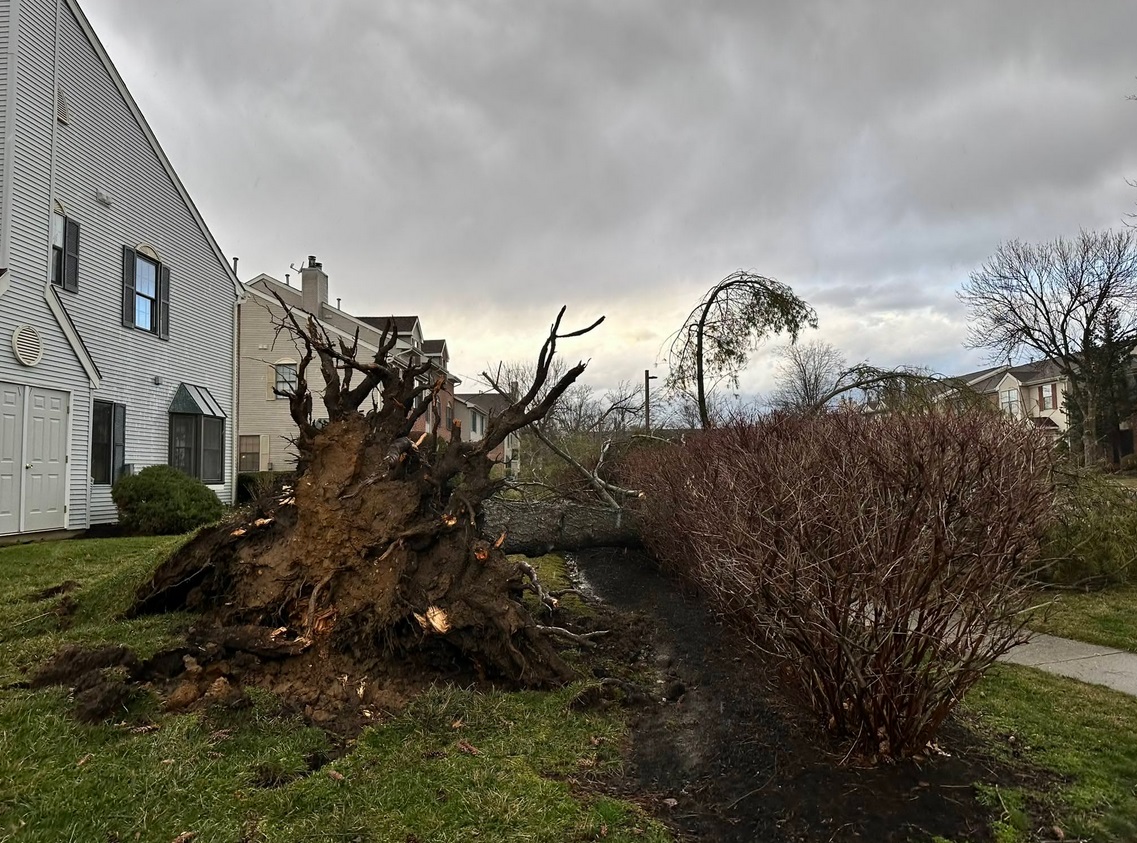Lawrence Township Tornado Event Overview

Lawrence township tornado – On June 22, 2009, a powerful EF4 tornado tore through Lawrence Township, Mercer County, New Jersey, causing widespread damage and leaving a lasting impact on the community.
The tornado touched down at approximately 6:30 PM EDT and traveled a path of 11.5 miles (18.5 kilometers), with a maximum width of 1,200 yards (1,100 meters). It destroyed or damaged over 1,000 homes and businesses, leaving many residents homeless.
The tornado also caused significant damage to infrastructure, including power lines, roads, and bridges. The total cost of the damage was estimated to be over $1 billion.
Meteorological Conditions
The Lawrence Township tornado was spawned by a supercell thunderstorm that developed in a region of warm, moist air ahead of a cold front.
The storm’s updrafts were particularly strong, and they tilted the rotating updraft, or mesocyclone, into a horizontal position. This allowed the tornado to form and remain on the ground for an extended period of time.
Response and Recovery Efforts

In the aftermath of the Lawrence Township tornado, emergency response efforts were swiftly mobilized, involving local authorities, emergency services, and volunteers.
Emergency Response, Lawrence township tornado
Local police and fire departments played a crucial role in securing the affected areas, conducting search and rescue operations, and providing medical assistance. Paramedics and emergency medical technicians worked tirelessly to stabilize and transport the injured.
Coordination and Assistance
Coordinating relief efforts was a significant challenge, given the widespread damage and the influx of assistance from various organizations. Local and state agencies established a joint task force to oversee the distribution of aid, including food, water, shelter, and medical supplies.
Long-Term Recovery
The long-term recovery process involved rebuilding efforts, community support, and economic revitalization. The community came together to assist in the cleanup, and local businesses donated resources and services.
Government agencies provided financial assistance and low-interest loans to homeowners and businesses affected by the tornado. Community organizations established support groups and counseling services to address the emotional and psychological needs of survivors.
The rebuilding process took several years, but the community’s resilience and determination prevailed. The tornado ultimately led to the construction of new homes, businesses, and community centers, contributing to the revitalization of Lawrence Township.
Lessons Learned and Preparedness: Lawrence Township Tornado

The Lawrence Township tornado taught valuable lessons about emergency response and disaster preparedness. One crucial lesson was the importance of early warning systems. The tornado struck with little warning, leaving residents with limited time to seek shelter. Implementing advanced warning systems, such as weather radar and mobile alerts, can provide critical lead time for people to take protective measures.
Evacuation Plans and Community Education
Another lesson learned was the need for comprehensive evacuation plans and community education. Many residents were unaware of designated evacuation routes or shelters. Establishing clear evacuation plans and conducting regular drills can ensure that people know where to go and what to do in the event of a tornado. Community education campaigns can also raise awareness about tornado risks and promote preparedness measures.
Improved Tornado Preparedness and Response
To enhance future tornado preparedness and response efforts, several recommendations can be made:
- Invest in early warning systems to provide timely alerts to residents.
- Develop comprehensive evacuation plans and conduct regular drills.
- Implement community education campaigns to raise awareness about tornado risks and preparedness measures.
- Train emergency responders on tornado response protocols.
- Conduct regular hazard assessments to identify vulnerable areas and mitigate risks.
By implementing these recommendations, communities can significantly improve their preparedness and response capabilities for future tornado events.